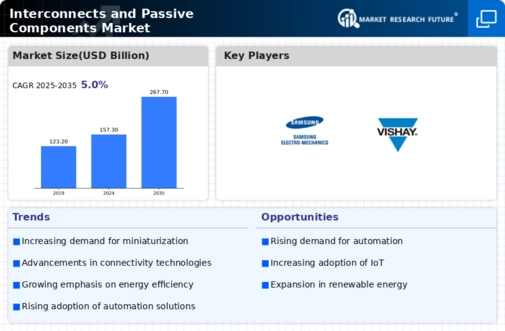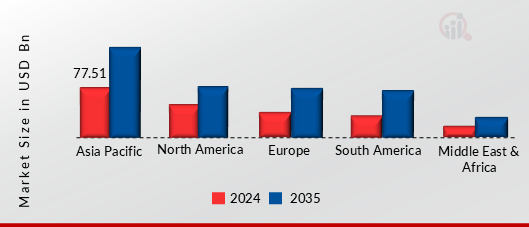Market Analysis
In-depth Analysis of Interconnects and Passive Components Market Industry Landscape
The Interconnects and Passive Components market is characterized by dynamic shifts driven by the rapid advancements in technology, increasing demand for connectivity, and the growing complexity of electronic systems. Interconnects and passive components, including connectors, cables, resistors, and capacitors, are fundamental building blocks in various electronic devices and systems. The market dynamics are shaped by factors such as technological innovation, industry convergence, and the evolving needs of end-users.
Technological innovation plays a pivotal role in influencing the market dynamics of Interconnects and Passive Components. The relentless pursuit of miniaturization, higher data transfer rates, and energy efficiency has led to the development of advanced interconnect solutions. The transition from traditional wired connections to high-speed connectors and cables capable of supporting emerging technologies like 5G, IoT (Internet of Things), and AI (Artificial Intelligence) has significantly impacted the market. Moreover, advancements in materials and manufacturing processes contribute to the development of components with improved performance, reliability, and durability.
Industry convergence is another key driver shaping the market dynamics of Interconnects and Passive Components. As various industries, such as automotive, telecommunications, and healthcare, integrate advanced electronic systems, the demand for sophisticated interconnects and passive components increases. For example, the automotive sector relies heavily on interconnects for in-car communication systems, sensors, and infotainment systems. The convergence of technologies in smart homes, wearables, and industrial automation further propels the demand for specialized components that can meet the specific requirements of diverse applications.
The evolving needs of end-users contribute significantly to the dynamic nature of the Interconnects and Passive Components market. With the increasing prevalence of electronic devices in everyday life, consumers seek smaller, more reliable, and energy-efficient products. This demand drives manufacturers to develop interconnects and passive components that not only meet the technical specifications but also address the user experience aspect. For instance, the demand for flexible and lightweight cables for consumer electronics, coupled with connectors that allow easy and quick assembly, reflects the changing preferences of end-users.
The competitive landscape is a crucial factor influencing the market dynamics of Interconnects and Passive Components. The industry comprises a mix of established players and new entrants, all vying for market share through innovation and differentiation. Market leaders invest heavily in research and development to introduce components with enhanced performance, higher speed capabilities, and increased functionality. The competitive environment often leads to strategic collaborations, mergers, and acquisitions, shaping the industry's direction and fostering a continuous cycle of innovation.
Additionally, global trends such as the emphasis on sustainable and eco-friendly solutions impact the market dynamics of Interconnects and Passive Components. As environmental concerns rise, manufacturers are pressured to develop components that adhere to green standards, emphasizing recyclability and reduced environmental impact. The shift towards circular economies and responsible manufacturing practices influences product development, market positioning, and consumer preferences.





Leave a Comment